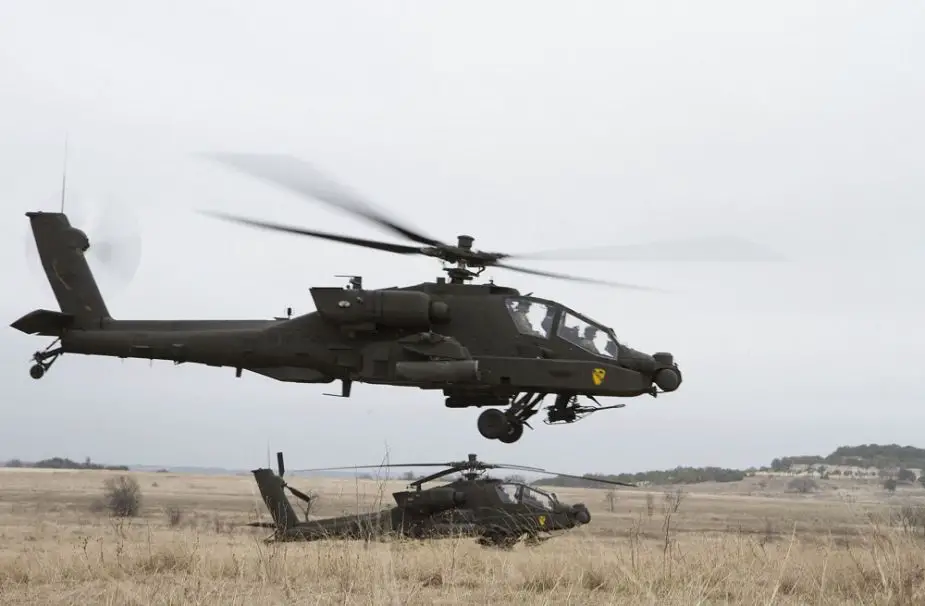Breaking news
First batch of four AH-64E attack helicopters has been delivered to Indian air Force.
The first batch of four AH-64 Apache attack helicopters has arrived at the Hindon Air Force Station in Ghaziabad on the outskirts of New Delhi, India on Saturday, July 27, 2019. Boeing has announced the arrival of the first four AH-64E Apaches for the Indian Air Force (IAF) at the Hindan Air Force Station.
 An American Palehorse’s AH-64E Apache departs for flight operations during Pegasus Forge IV, January 31, 2019. (Picture source U.S. DoD)
An American Palehorse’s AH-64E Apache departs for flight operations during Pegasus Forge IV, January 31, 2019. (Picture source U.S. DoD)
The order for the purchase of 22 AH-64E Apache attack helicopters was signed by the Indian Ministry of Defence in 2015 including production, training and support. The Indian government also cleared the acquisition of an additional six Apaches for the Indian Army in 2017.
The AH-64E Apache for the Indian Air Force completed successful first flights in July 2018. The first batch of Indian Air Force crew began their training to fly the Apache in the U.S. in 2018.
The AH-64 Apache is an American twin-turboshaft attack helicopter designed and manufactured by American Company Boeing. It has a tail wheel-type landing gear arrangement and a tandem cockpit for a crew of two. The AH-64E attack helicopter is the latest version of the AH-64, used by the US Army. It is also known as Apache Guardian.
The AH-64 Apache features a nose-mounted sensor suite for target acquisition and night vision systems. It is armed with a 30 mm (1.18 in) M230 chain gun carried between the main landing gear, under the aircraft's forward fuselage, and four hardpoints mounted on stub-wing pylons for carrying armament and stores, typically a mixture of AGM-114 Hellfire missiles and Hydra 70 rocket pods.
The AH-64E features improved digital connectivity, the Joint Tactical Information Distribution System, more powerful T700-GE-701D engines with upgraded face gear transmission to accommodate more power, capability to control unmanned aerial vehicles (UAVs), full IFR capability, and improved landing gear. New composite rotor blades, which successfully completed testing in 2004, increase cruise speed, climb rate, and payload capacity.

























